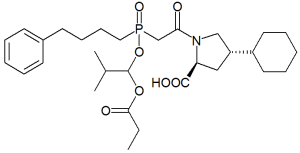When taken after an acute myocardial infarction, angiotensin-converting enzyme (ACE) inhibitors improve survival and reduce the risk of recurrence. This has been thought to be a class effect--i.e., all drugs in the class have the same beneficial outcomes. Because different ACE inhibitors vary in structure and potency, they may not be equally effective. Pilote and associates examined the one-year mortality rate of various ACE inhibitors when given to older persons after a first acute myocardial infarction.
A chart review was used to identify patients 65 years or older who filled at least one prescription for an ACE inhibitor within 30 days of discharge following an acute myocardial infarction. A total of 7,512 patients were selected and were grouped by ACE inhibitor. Patients who switched prescriptions during the first year were excluded. Enalapril was the most common prescription, followed by lisinopril.
Patients taking enalapril, fosinopril, captopril, or quinapril had higher mortality rates than those taking ramipril. No significant difference was shown between ramipril and lisnopril or perindopril. Readmissions for unstable angina and recurrent myocardial infarction were similar across all treatment groups.
The authors conclude that there is variation among ACE inhibitors, and that the one-year mortality rate is significantly lower in older persons who take ramipril after a first acute myocardial infarction than in those taking other ACE inhibitors. It is unclear what mechanism is responsible for this difference. More studies are needed to confirm these results.
Pilote L, et al. Mortality rates in elderly patients who take different angiotensin-converting enzyme inhibitors after acute myocardial infarction: a class effect? Ann Intern Med July 20, 2004;141:102-12.
EDITOR'S NOTE: In an editorial in the same journal, (1) Hennessy and Kimmel comment that the best way to evaluate drug effects in a pharmacologic class is to perform head-to-head randomized trials of clinical outcomes or validated surrogate endpoints. Because there are no validated surrogate endpoints for the mortality reduction proferred by ACE inhibitors, these trials cannot be used. Other studies are prone to bias. Hennessy and Kimmel point out that, in the above study, (2) there were variations in the point at which ACE inhibitors were started in each patient population, and they also note the higher proportion of patients receiving beta blockers and lipid-lowering drugs in the ramipril and perindopril groups. They conclude that the evidence is not sufficient to favor one ACE inhibitor over another on the basis of survival benefit after acute myocardial infarction; however, they recommend using only those ACE inhibitors that have been proven to increase survival rates for this indication.--R.S.
REFERENCES
(1.) Hennessy S, Kimmel SE. Is improved survival a class effect of angiotensin-converting enzyme inhibitors? Ann Intern Med 2004;141:157-8.
(2.) Pilote L, Abrahamowicz M, Rodrigues E, Eisenberg M J, Rahme EM. Mortality rates in elderly patients who take different angiotensin-converting enzyme inhibitors after acute myocardial infarction: a class effect? Ann Intern Med 2004;141:102-12.
COPYRIGHT 2005 American Academy of Family Physicians
COPYRIGHT 2005 Gale Group



